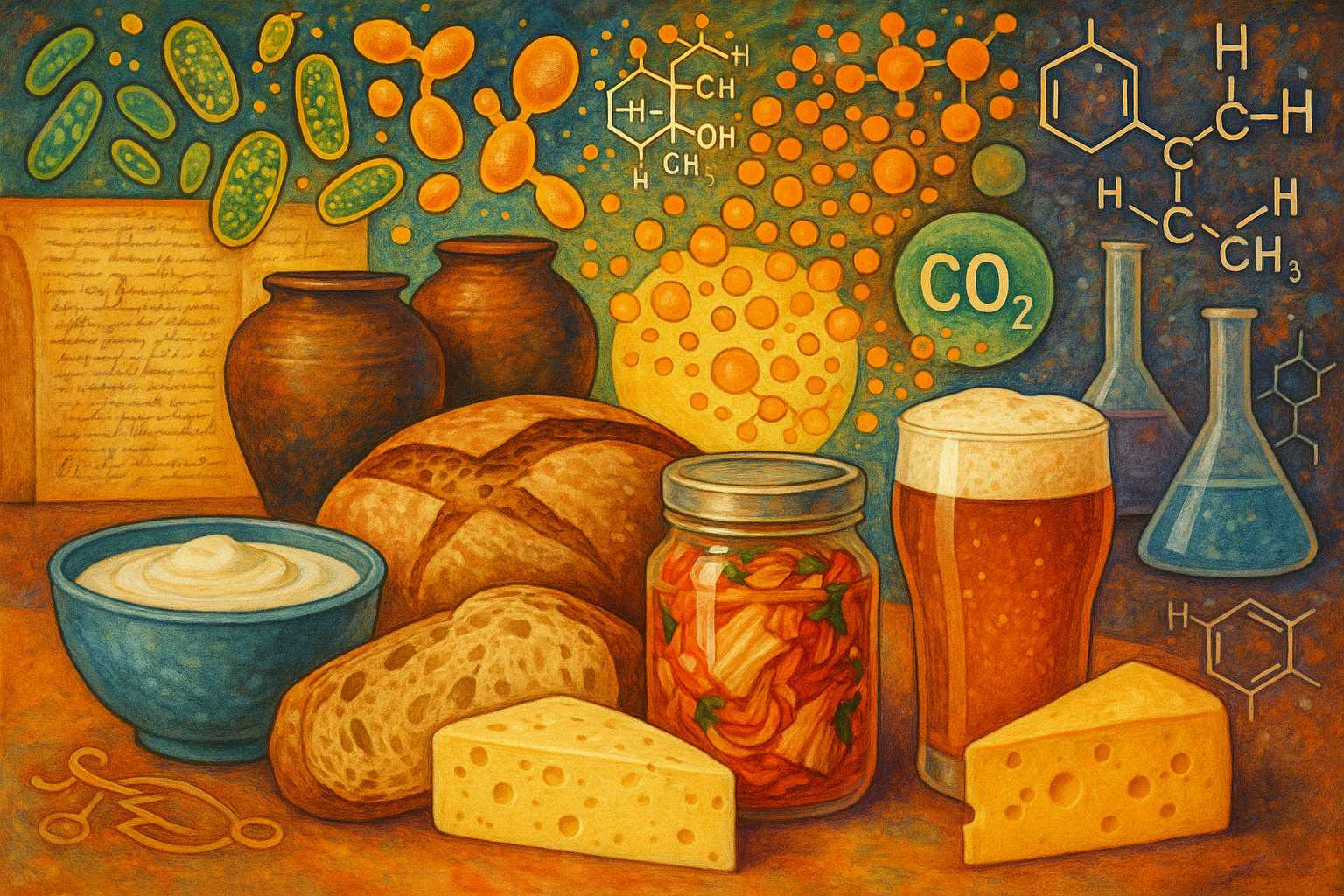Fermentation is an age-old process that has transformed our diets and shaped cultures around the world. From the tangy taste of yogurt to the subtle flavors of sourdough bread and the complexity of fermented beverages like beer and wine, this biochemical phenomenon is fueled by the action of invisible microorganisms. But what exactly happens during fermentation at the molecular level, and why is it so beneficial?
The Science Behind Fermentation
At its core, fermentation is a metabolic process in which microorganisms like bacteria and yeasts convert carbohydrates (usually sugars) into other chemicals such as acids, gases, or alcohol. One of the most famous examples is the conversion of glucose into ethanol and carbon dioxide by yeast during the making of bread and alcoholic beverages:
C6H12O6 (glucose) → 2 C2H5OH (ethanol) + 2 CO2 (carbon dioxide)
But beyond alcohol, many other tasty and healthy products are made using lactic acid fermentation. Lactic acid bacteria, found in foods like yogurt, sauerkraut, and kimchi, convert lactose or other sugars into lactic acid, which acts as a preservative and gives these foods their characteristic sour tang.
Fermentation and Health
The benefits of fermentation extend far beyond food preservation. Fermented foods often contain beneficial probiotics (live microorganisms) that can improve gut health, aid digestion, and even support our immune systems. Furthermore, fermentation can increase the bioavailability of certain nutrients, making vitamins and minerals easier for our bodies to absorb.
A Legacy of Innovation
Fermentation is both an art and a science—requiring careful control of conditions like temperature, pH, and time. Ancient civilizations discovered its secrets by trial and error, while today’s scientists use molecular biology and analytical chemistry to optimize and expand its applications. Modern biotechnology even uses engineered microbes to produce medicines, enzymes, and sustainable fuels.
Next time you enjoy a slice of cheese or take a sip of kombucha, remember: you’re tasting the results of billions of years of evolution and a fascinating dance of biology and chemistry. Fermentation, in all its forms, continues to enrich our plates—and our understanding of life’s hidden processes.
—Carl


Leave a Reply